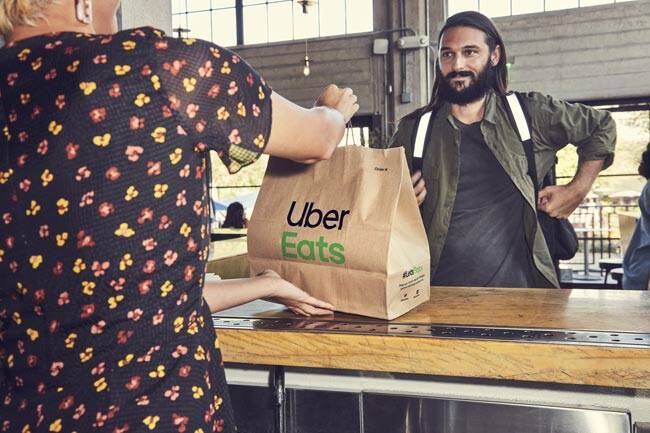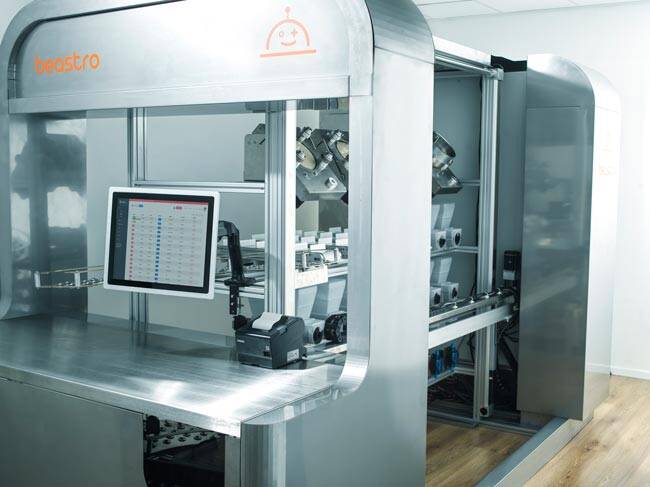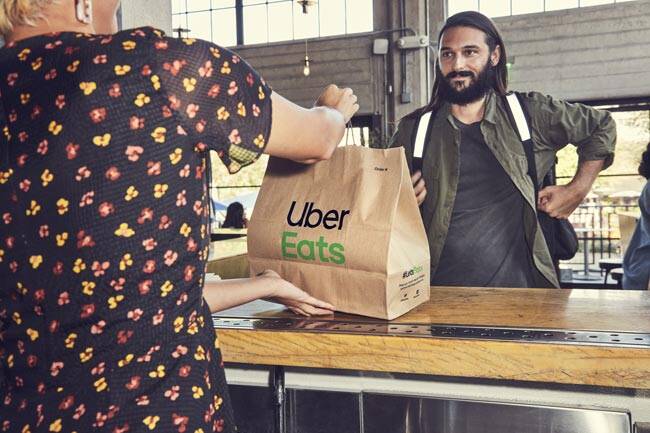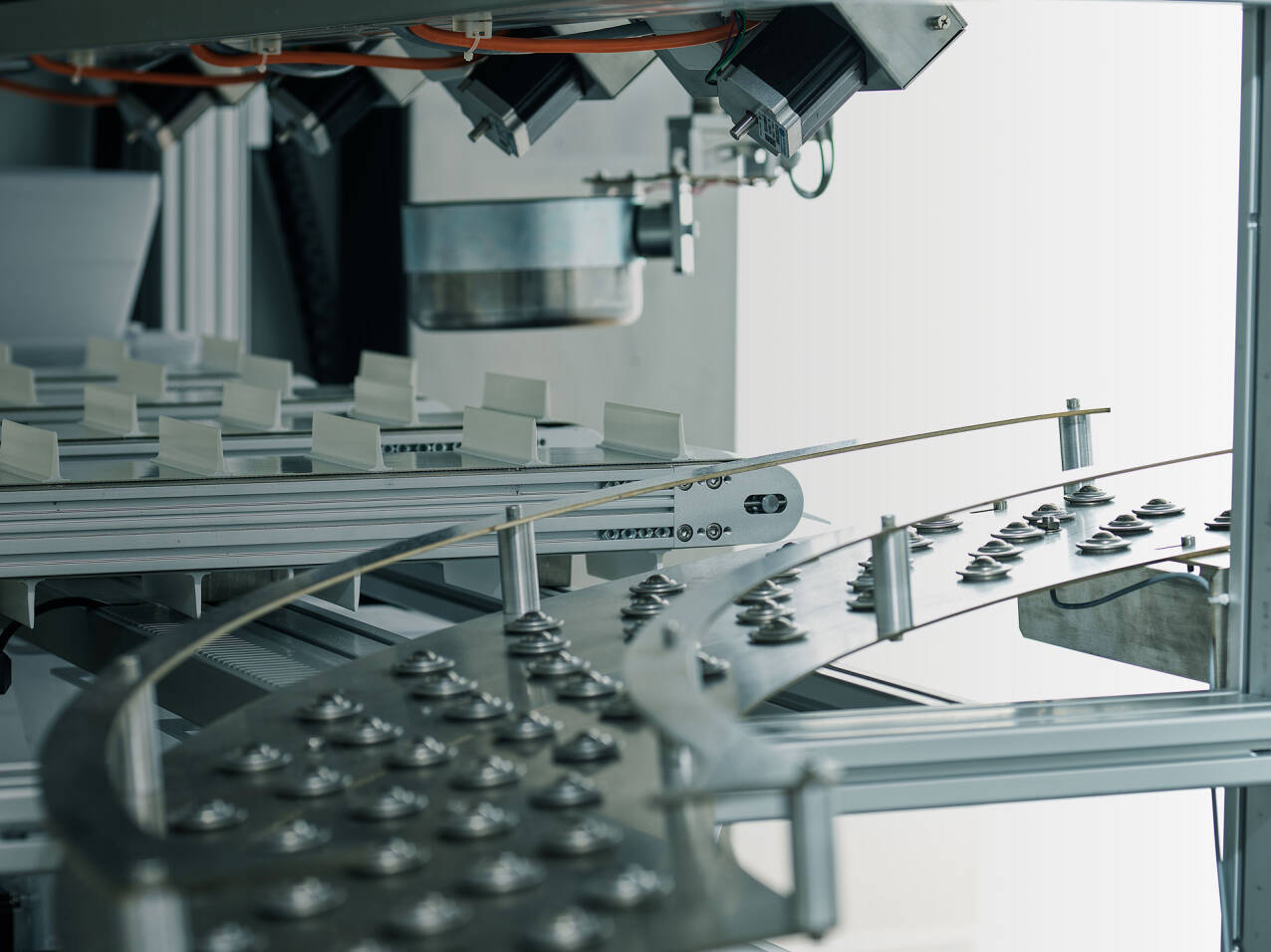big money and big names
The Ghost Kitchen space sees plenty of investments. Uber co-founder Travis Kalanick’s CloudKitchens, which offers full kitchens for delivery-only restaurants, has secured over $400 million in funding. Uber Eats has several Ghost Kitchens of its own in Europe, and Pasadena based Kitchen United has secured over $50 million. The latest in an interesting string of developments is celebrity branded virtual restaurants. Rappers Wiz Khalifa and Tyga both have their own separate concepts operating out of Ghost Kitchens. DJ and producer Steve Aoki owns virtual pizza place Pizzaoki. Celebrity cook Rachel Ray also partnered with Uber Eats for a limited time virtual restaurant last year. It’s safe to say the space is as vibrant as it's ever been, and with the devastating and transformational effect of the COVID-19 pandemic on restaurants, we could be looking at the future of foodservice.

©Kitchen Robotics

Automation has arrived
The Israeli company Kitchen Robotics recently revealed the latest technological milestone for Ghost Kitchens: Beastro. The Beastro is a fully automated, ready for use Ghost Kitchen. It comes armed with cloud based software that offers dish analytics, personalization, customization, and supply management. Through machine learning and artificial intelligence, the Beastro can improve its own efficiency and potentially reduce operational costs and food waste. It’s also able to be integrated with meal delivery services like Doordash and Uber Eats. Beastro produces up to 45 meals an hour.
seismic shift
Ghost Kitchens might very well represent a fundamental shift in the foodservice industry. A shift extending all the way to how and what we eat. Not every meal transports well, for instance, meaning that as delivery becomes more and more prevalent, dishes that are optimized for delivery will rise in popularity. A report predating the COVID-19 pandemic predicts that Ghost Kitchens will represent half of all restaurant volume by 2022. The COVID-19 crisis has only accelerated that development. Concept developers would do well to keep an eye on these ongoing changes.
©Uber Eats


boosted by COVID-19 CRISIS
The COVID-19 pandemic has greatly accelerated the development of Ghost Kitchens, especially in the United States. American foodservice has been forced into a ‘to go or die’ mentality in which food delivery is the only way for restaurants to survive. Ghost Kitchens offer some major advantages when compared to traditional sit down restaurants in this scenario. If you don’t rely on any kind of foot traffic or sit down guests at all the location of your business is significantly less important. This means reduced rent expenditures, among other things. Efficiency, too, is easier to realize when the concept has been designed from the ground up to cater exclusively to delivery. A third major benefit is that multiple restaurant concepts can use the same Ghost Kitchen facility.
Jelle Steenbergen Xiao-Er Kong
Ghost Kitchens are a relatively new phenomenon in the food industry. So new, in fact, that a consensus on what to call this type of concept has yet to be reached. Dark Kitchens, Virtual Kitchens, Cloud Kitchens, all names for the same idea: a restaurant without a front of house, cooking exclusively for food delivery. These concepts are proving to be a successful answer to the rising demand for meal delivery services, and it’s looking like they’re here to stay. Market researchers at Euromonitor predict the market cap for Ghost Kitchens will grow to a trillion dollars by 2030.

The COVID-19 crisis is accelerating delivery-only restaurant concepts
on their way to a trillion dollar industry in 2030
ghost kitchens
3 min
COOL CONCEPT
GHOST KITCHENS
©Kitchen Robotics

©Kitchen Robotics

The COVID-19 crisis is accelerating delivery-only restaurant concepts
ghost kitchens
big money and big names
The Ghost Kitchen space sees plenty of investments. Uber co-founder Travis Kalanick’s CloudKitchens, which offers full kitchens for delivery-only restaurants, has secured over $400 million in funding. Uber Eats has several Ghost Kitchens of its own in Europe, and Pasadena based Kitchen United has secured over $50 million. The latest in an interesting string of developments is celebrity branded virtual restaurants. Rappers Wiz Khalifa and Tyga both have their own separate concepts operating out of Ghost Kitchens. DJ and producer Steve Aoki owns virtual pizza place Pizzaoki. Celebrity cook Rachel Ray also partnered with Uber Eats for a limited time virtual restaurant last year. It’s safe to say the space is as vibrant as it's ever been, and with the devastating and transformational effect of the COVID-19 pandemic on restaurants, we could be looking at the future of foodservice.

Automation has arrived
The Israeli company Kitchen Robotics recently revealed the latest technological milestone for Ghost Kitchens: Beastro. The Beastro is a fully automated, ready for use Ghost Kitchen. It comes armed with cloud based software that offers dish analytics, personalization, customization, and supply management. Through machine learning and artificial intelligence, the Beastro can improve its own efficiency and potentially reduce operational costs and food waste. It’s also able to be integrated with meal delivery services like Doordash and Uber Eats. Beastro produces up to 45 meals an hour.

seismic shift
Ghost Kitchens might very well represent a fundamental shift in the foodservice industry. A shift extending all the way to how and what we eat. Not every meal transports well, for instance, meaning that as delivery becomes more and more prevalent, dishes that are optimized for delivery will rise in popularity. A report predating the COVID-19 pandemic predicts that Ghost Kitchens will represent half of all restaurant volume by 2022. The COVID-19 crisis has only accelerated that development. Concept developers would do well to keep an eye on these ongoing changes.
©Uber Eats


boosted by COVID-19 CRISIS
The COVID-19 pandemic has greatly accelerated the development of Ghost Kitchens, especially in the United States. American foodservice has been forced into a ‘to go or die’ mentality in which food delivery is the only way for restaurants to survive. Ghost Kitchens offer some major advantages when compared to traditional sit down restaurants in this scenario. If you don’t rely on any kind of foot traffic or sit down guests at all the location of your business is significantly less important. This means reduced rent expenditures, among other things. Efficiency, too, is easier to realize when the concept has been designed from the ground up to cater exclusively to delivery. A third major benefit is that multiple restaurant concepts can use the same Ghost Kitchen facility.
Jelle Steenbergen Xiao-Er Kong
Ghost Kitchens are a relatively new phenomenon in the food industry. So new, in fact, that a consensus on what to call this type of concept has yet to be reached. Dark Kitchens, Virtual Kitchens, Cloud Kitchens, all names for the same idea: a restaurant without a front of house, cooking exclusively for food delivery. These concepts are proving to be a successful answer to the rising demand for meal delivery services, and it’s looking like they’re here to stay. Market researchers at Euromonitor predict the market cap for Ghost Kitchens will grow to a trillion dollars by 2030.

on their way to a trillion dollar industry in 2030
3 min











